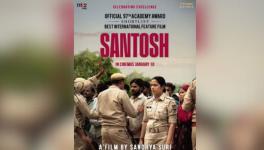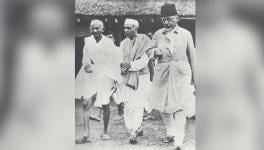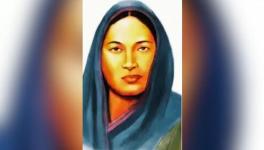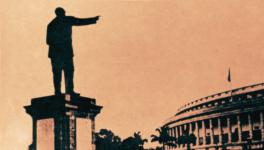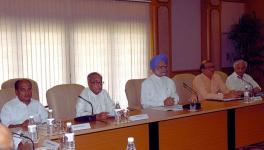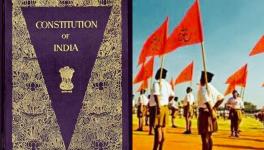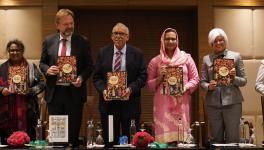In Memory of Subaltern Scholar-Activist U. Sambasiva Rao
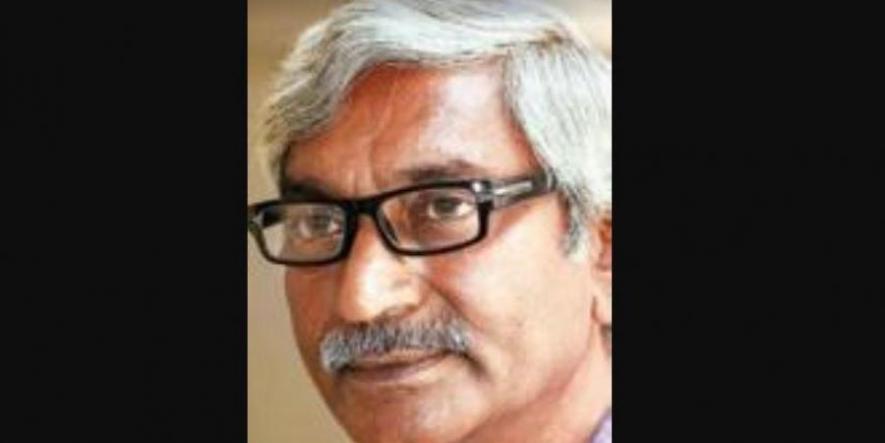
U.Sambasiva Rao’s (popularly known as U Sa) death due to COVID-19 was untimely and avoidable if timely medical attention was made available to him. His death, at this critical juncture, is a loss which will be felt for a long time to come. We will miss a vigilant gaze and a critical voice that we have become accustomed to be alerted by over the years.
My memories of U Sa go back to the early 90’s. It was a period which saw a renewed debate on caste in the undivided Telugu state of Andhra Pradesh.
If the Karamchedu massacre of Dalits in 1985 led to a political and social mobilisation with an acute sensitivity to the caste question, then Chundur in 1991 led to an enhanced engagement with caste in a theoretical and ideological sense from the view of an anti-caste project.
Two important developments in the early 90’s deserve mention and are hence notable.
The first was the emergence of Edureeta (meaning: ‘Against the Tide’) as a platform for a debate on the anti-caste project with U Sa and senior Left and Dalit activist K.G. Satyamurthi in the lead.
Secondly, post-Chundur also saw an intellectual churning in the universities in Andhra Pradesh. Osmania University also witnessed an intense churn among Left academics on caste, with them shedding their reticence or rather indifference to this crucial issue.
The result of this was the founding of Satyashodhak as a centre for social research to research, analyse and debate the historical centrality of and contemporary dynamics of caste in the understanding of social transformation in India.
We, as Satyashodhak collective, sought to bring the depth of political economy to the caste question, which, in the anti-caste discourse, was overwhelmingly seen as a ritual hierarchical reality. As part of this we undertook a study of changing caste-occupations, economic and social trajectories and new forms of social and economic marginalisation and emergent structures of exclusion of the Shudra-ati-Shudra artisanal, service castes from the developmental process. This research, pursued with a long duree focus and sharpened and accelerated by the context of economic liberalisation in the 1990s had a social, political and policy urgency.
This was also a period which saw a critical turn in the social sciences in India – from being state-centric to a phase wherein detailed attention to civil and subaltern society was found to be imperative. This was not a dominant trend, but a definite emergence of a critical tendency in this direction could be deciphered in the post-Emergency period. The immediate context for this shift was the fact that the Emergency demolished the innocence of the earlier decades of post-Independence existence, wherein the faith in the state, constitutional morality and trust in a democratic future were largely taken for granted. The result of this awareness could be seen in the shift in social science research, evident in the emergence of studies focusing on the new subaltern subjectivity to look at caste, gender, Dalit and adivasi agency. Critical attention was also given to the effects of development which were evident in the increasing studies on marginalisation, displacement, dispossession, ecological degradation, and so on.
It was at this historical juncture that U Sa and the Edureeta collective came into contact with the Satyashodhak collective. What transformed this into a long term association and friendship was:
- the shared uneasiness with the traditional Left, both ideologically and organisationally;
- the inadequacy of the received dominant frames of Marxism and characterisation of Indian society and its transformative trajectory;
- new challenges posed by the neo-liberal project of globalisation, liberalisation and privatisation pursued as the only alternative course available.
Needless to say, this uneasiness and inadequacy was felt at a theoretical level by the university scholars, and rather intensely on the practical plane by the Edureeta group and articulated by U Sa. Our friendship, which began with ideological precedence and preponderance, soon blossomed into a personal one.
Our journeys thus coincided and were also combined with the publication of the Satyashodhak manifesto in Edureeta, with it being debated for over a year and us being regularly invited to contribute to the journal on important issues.
Under U Sa’s editorship, Edureeta emerged as a platform open for new ideas; known for being democratic in spirit and experimental in thinking. This was necessitated by the fact that new challenges were posed by new identity-based social and cultural movements, increasing subaltern Dalit-bahujan marginalisation and exclusion and demands for the re-articulating of the federal question, beginning with the post-Emergency period and accelerated by the neo-liberal macro policy shift.
Edureeta played a pivotal role in identifying and encouraging debates on issues of caste, class, patriarchy, gender, Nationality and regional questions which did not receive the due attention they deserved, either due to the theoretical and conceptual blindness in the dominant discourses, or as a result of neglect or being ‘othered’ due to the political and organisational priorities of Left parties.
Interestingly, Edureeta also became a Telugu vernacular platform for bringing forth thinkers otherwise considered to be irreconcilable and even non-negotiable – Marx and Phule, Ambedkar and Gramsci – to reflect on the above questions, seen as part of the larger project of caste annihilation.
It would be an exaggeration to suggest that the Edureeta was fruitful in finding definitive answers to the complexities of caste, but it was undoubtedly instrumental in articulating questions, and much more importantly, bringing attention and centrality to them in the intellectual and public discourse.
Like all experiments, both the Satyashodhak collective and Edureeta were closed down by the mid-90’s and members of the respective collectives chalked out their own distinct paths. U Sa had a remarkable presence in their journey.
Despite having parted ways, members of the Edureeta collective and U Sa had transcended narrow intellectual and political differences and had a sustained friendship.
Given Edureeta’s criticality to U Sa’s intellectual and political development, his long journey can be divided into three phases.
- Pre-Edureeta
- Edureeta
- Post-Edureeta
The post-Edureeta period in U Sa’s life represented both continuity and newness. If the relevance of the anti-caste project and dimensions of class, gender and nationality represented continuity, then to translate that into practice both politically and organisationally could be seen as the new beginning.
Undaunted by setbacks, U Sa could be seen discovering new paths and seeking to invent. The founding of the Mahajana Front and starting Desi Disa as a journal were two important steps demonstrative of his zeal to experiment and continue to struggle.
He believed in the centrality of a journal for the ideological counter-hegemony that the anti-caste struggle essentially has to be. He discussed the need for a theoretical journal and I had my own reservations about the possibility or feasibility of it.
This is due to the intellectual unpreparedness of our vernacular society to conduct high quality discourse. The narrow and fast shrinking intellectual base in our society makes it a difficult task. This is demonstrated by the similar attempts on the part of the Left journals, which end up as exercises in political journalism and news analysis.
Secondly, the decline of quality education and the massive shift away from social sciences and humanities since the 90’s in Andhra Pradesh has shrunken the readership capable of appreciating high-quality discourse. Those who are equipped could and would turn to journals available in English.
Since the 90’s, the world has increasingly seen the proliferation of visual media. The expansion of new media or so-called social media has prioritised visual over literary. Visual capitalism triumphing over print capitalism catalysed by rapid and far-reaching changes in communication technology marks the present phase of human history. This marks the dominance of visual over literary, preference for image over alphabet, preponderance of seeing/viewing over reading.
The middle-class is clearly in the grip of visual consumerism. Perhaps as a realisation of this ground reality, U Sa turned Desi Disa into a YouTube channel.
What does U Sa’s life and practice signify? Given his concern, angst, commitment and contribution to the alternative politics of subaltern Shudra-ati-Shudra justice and the anti-caste project, it is worth conceptualising the essential aspects of his vision and practice.
Firstly, the recognition of the importance of counter-hegemonic struggle as an inevitable and integral part of transformatory politics, and the anti-caste movement being a central aspect of such a project. Its significance and urgency is felt much more widely in times of the Hindutva project. The refusal to recognise this by his earlier affiliations was the cause of his disenchantment with the traditional Left. This is what characterised his practice since and after the Edureeta phase. His efforts with Edureeta as the locus and later with Desi Desa as a platform were directed by a recognition of the importance of ideological struggle and a concerted effort at striving for a common ground for collective action.
Secondly, the vision that the anti-caste cannot be sectarian but has to be broad based. Given the breadth, duration and intensity, a concerted collective effort overcoming the differences of emphasis and primacies (e.g. caste first or class) is required to accomplish its end.
U Sa spared no effort, and in fact showed tremendous initiative and displayed the necessary flexibility to bring together people and organisations which were different and divided, by exploring the possibilities of cooperation and collaboration – thus aiming at unity with differences. His work with different progressive organisations was guided by this broad democratic transformative vision.
Thus, it is the recognition of the necessity of focusing on caste annihilation without losing sight of its interrelation with class. This obviously demanded the rejection of pre-deterministic theoretical rigidity or closed-ness, and invitation to experimentation opening the possibility of exploring apparently irreconcilable thinkers like Phule, Marx, Ambedkar and Gramsci to draw upon to reflect on our concerns.
Finally, U Sa displayed a distinctly positive approach towards universities. Left activists are generally known for their indifferent dispensation or disinterested attitude towards universities.
U Sa demonstrated a nuanced recognition of the importance and role of a university as a site of production of ideas and of intellectuals. He missed no chance and in fact actively sought to create opportunities to interact and collaborate with the teachers and students in universities. It was a demonstration of his intuition of the dialectical unity of theory and practice.
It is no exaggeration that U Sa’s life and practice stands as an example of the call to ‘Educate, Agitate and Organise’ in the struggle for justice and an anti-caste world.
The author was a Professor at Osmania University.
Get the latest reports & analysis with people's perspective on Protests, movements & deep analytical videos, discussions of the current affairs in your Telegram app. Subscribe to NewsClick's Telegram channel & get Real-Time updates on stories, as they get published on our website.











